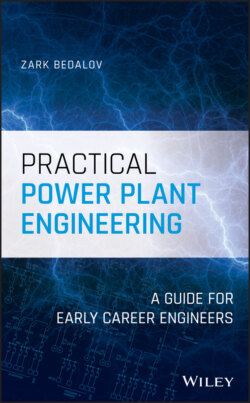Читать книгу Practical Power Plant Engineering - Zark Bedalov - Страница 44
2.3.3 Reliability Criteria
ОглавлениеBefore we start putting things together, let us clarify the design reliability criteria, discussed in Chapter 21.
In order to ensure adequate availability and continuous plant operation, the power distribution system must be designed to tolerate and override certain failures of the equipment. Generally, the system will be designed for “a single contingency failure” of the principal distribution equipment. This is sometimes called “a single outage contingency.” In other words, the design will fully cover for a single failure of one major piece of equipment, such as transformer, pump, motor, but not for a simultaneous failure of two pieces of similar major equipment.
Therefore, each pump system, which is considered a critical primary part of the operating plant shall include 2 × 100% units. In some cases, for larger pumps, 3 × 50% pumps could be used. For sump pumps, roof fans, heating, ventilating air conditioning (HVAC), etc., which are considered the plant auxiliary services, there shall be no immediate substitutes. The switchgear busbars from the plant distribution transformers will be bussed together through bus tie breakers to allow for feeding the plant loads from a single transformer, in case of an outage of one transformer. Failure of some smaller distribution transformer may be tolerated by reconnecting the load to alternate sources of power supply.
Recovery from power outages will be either by having spares cable connected or piped, or by switching capability to feed power from alternate sources such as closing the bus tie circuit breaker.
No contingency consideration will be given to the failures of power cables, lines, or pipes, which can be replaced or fixed relatively quickly, except for the high voltage (HV) single conductor cables used in power plants for 138 kV and higher, where one additional spare phase is added and laid out next to the operating cables. Therefore, during the plant design, one may ask: “What if…?” But not: “What if…, and if…?”
